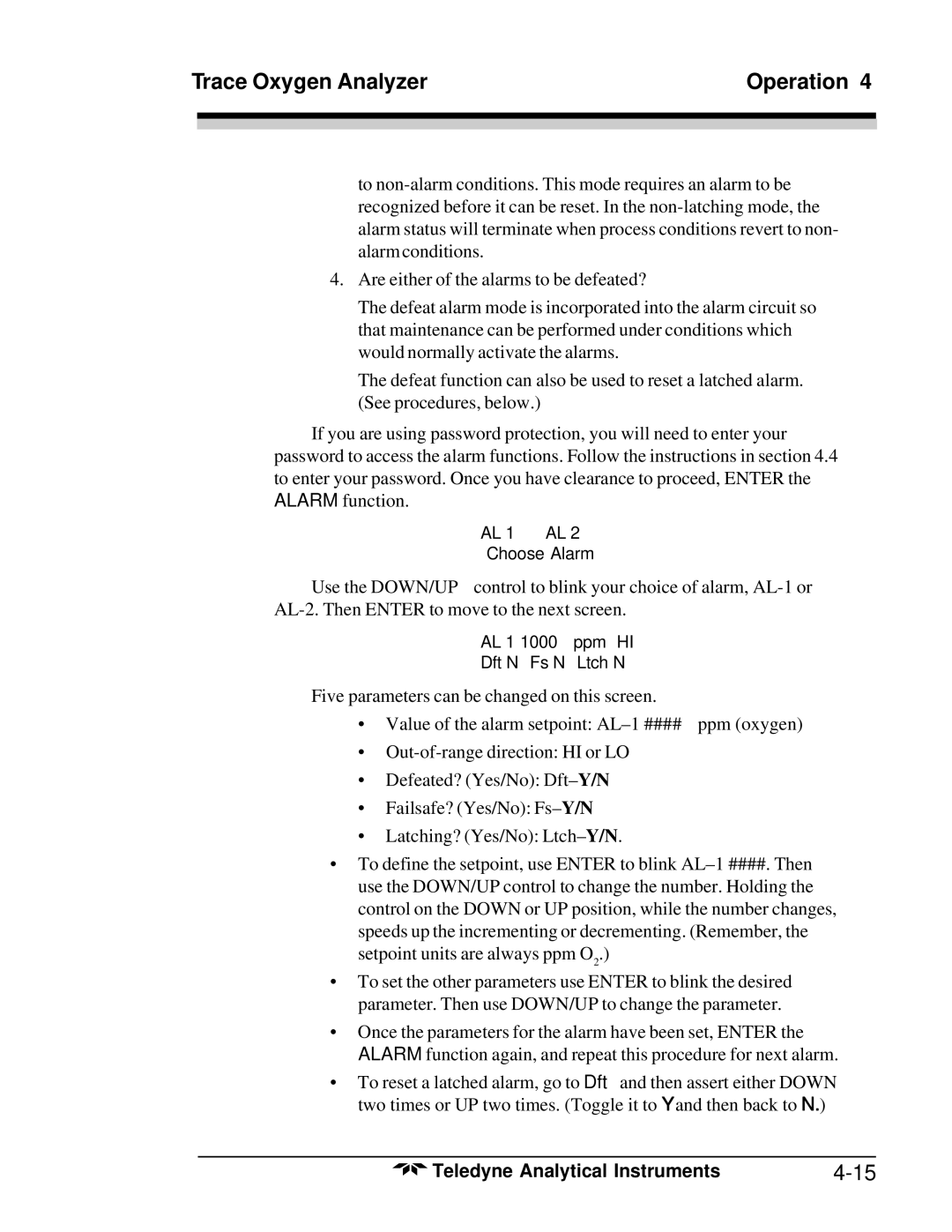Trace Oxygen Analyzer | Operation 4 | |
|
|
|
|
|
|
|
|
|
to
4.Are either of the alarms to be defeated?
The defeat alarm mode is incorporated into the alarm circuit so that maintenance can be performed under conditions which would normally activate the alarms.
The defeat function can also be used to reset a latched alarm. (See procedures, below.)
If you are using password protection, you will need to enter your password to access the alarm functions. Follow the instructions in section 4.4 to enter your password. Once you have clearance to proceed, ENTER the ALARM function.
AL—1 AL—2
Choose Alarm
Use the DOWN/UP control to blink your choice of alarm,
Five parameters can be changed on this screen.
• Value of the alarm setpoint:
•
•Defeated? (Yes/No): Dft– Y/N
•Failsafe? (Yes/No): Fs– Y/N
•Latching? (Yes/No): Ltch– Y/N.
•To define the setpoint, use ENTER to blink
•To set the other parameters use ENTER to blink the desired parameter. Then use DOWN/UP to change the parameter.
•Once the parameters for the alarm have been set, ENTER the ALARM function again, and repeat this procedure for next alarm.
•To reset a latched alarm, go to Dft– and then assert either DOWN two times or UP two times. (Toggle it to Y and then back to N.)
Teledyne Analytical Instruments |
